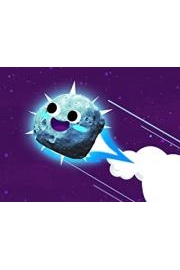
Ep 13. Eight Planets
- July 1, 2018
- 1 min
Pinkfong! Outer Space Songs is an animated educational show for young children that teaches them about the wonders of outer space through catchy songs and colorful visuals. In season 1 episode 13, titled Eight Planets, Pinkfong and his friends take the audience on a journey through our solar system to introduce and explore each of the planets.
The episode kicks off with the theme song and a brief introduction to space, setting the stage for the adventure to come. Pinkfong and his crew then travel through space to the first planet of the solar system, Mercury. They explain how Mercury is the closest planet to the sun and is the smallest of all the planets. They also share some interesting facts about the planet, such as how it is covered in craters and has extreme temperature changes between its dark and light sides.
Next up is Venus, the second planet from the sun. The episode explains how Venus is often called Earth's twin because it is similar in size, but the similarities end there. The planet's atmosphere is made up mostly of carbon dioxide, which creates a greenhouse effect that traps heat, making it the hottest planet in the solar system. Pinkfong and his friends also touch on how the planet's volcanoes and sulfuric acid clouds make it a hostile environment for life as we know it.
Mars, the fourth planet from the sun, is well known in popular culture for being the "Red Planet". Pinkfong and his companions explain that Mars' red color is due to iron oxide, or rust, on its surface. The episode also speaks about how there is evidence of water on Mars, making it a possible location for future colonization by humans.
The audience is then introduced to Jupiter, the largest planet in the solar system. Pinkfong and friends explain how Jupiter is a gas giant and its size is so massive that it contains more than twice the mass of all other planets combined. They also point out the iconic Great Red Spot, a storm on Jupiter that has been raging for over 350 years.
Saturn, the sixth planet from the sun, is known for its stunning and recognizable rings, which are made up of ice and rock particles. The episode gives insight into how the rings were formed and how they constantly change over time. Pinkfong and his group also explain how Saturn has a very low density, which means it could technically float on water if there were a body of water large enough to hold it.
Next up is Uranus, the seventh planet from the sun. The episode points out how Uranus rotates on its side, which causes its poles to face the sun. Pinkfong and his friends also share how Uranus has the coldest temperatures of any planet in the solar system.
Lastly, the audience meets Neptune, the eighth and farthest planet from the sun. The episode explains how Neptune is one of the four gas giants and how it has strong winds that can reach up to 1,200 miles per hour. Pinkfong and his companions also touch on how Neptune has a faint ring system and a unique blue color due to its atmosphere containing methane.
Throughout the episode, the audience is treated to vibrant and engaging visuals that bring each planet to life. The songs are catchy and easy to follow along with, making it an enjoyable experience for both children and adults. By the end of the episode, viewers will have learned about all eight planets of our solar system and gained a greater appreciation for the wonders of space.
Overall, Pinkfong! Outer Space Songs season 1 episode 13 provides an entertaining and educational overview of our solar system that is sure to capture the attention of young minds. The episode does an excellent job of breaking down complex concepts into accessible language for children, making it a fun and engaging way to learn about space.